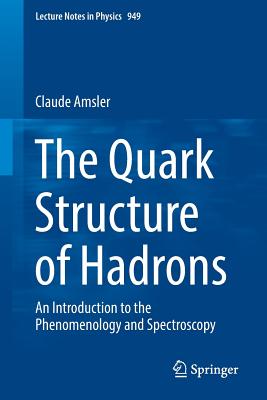
The Quark Structure of Hadrons: An Introduction to the Phenomenology and Spectroscopy (Lecture Notes in Physics #949)
Current price:
$99.99
Publication Date: November 1st, 2018
Publisher:
Springer
ISBN:
9783319985268
Pages:
277
Usually Ships in 1 to 5 Days
Description
Introduction.- Mesons.- Isospin multiplets.- C parity.- Meson nonets.- SU(2).- SU(3).- Heavy quarks.- SU(4).- Quarkonium.- SU(3) color.- Intermezzo: parametrization of resonances.- Tetraquark.- Pentaquark.- Baryons.- Excitations of light baryons.- Heavy baryons.- Spin and decay angular distribution.
Other Books in Series
Modern Thermodynamics and Statistical Mechanics: A Comprehensive Foundation (Undergraduate Lecture Notes in Physics)
Hardcover
Principles of Physics: For Scientists and Engineers (Undergraduate Lecture Notes in Physics)
Hardcover
Astrophysics (Undergraduate Lecture Notes in Physics)
Paperback
Introductory Lectures on Higher-Spin Theories (Lecture Notes in Physics #1028)
Paperback
Quantum Transport in Interacting Nanojunctions: A Density Matrix Approach (Lecture Notes in Physics #1024)
Paperback
Percolation Theory Using Python (Lecture Notes in Physics #1029)
Paperback
New Trends and Platforms for Quantum Technologies (Lecture Notes in Physics #1025)
Hardcover
Solved Problems and Systematic Introduction to Special Relativity (Undergraduate Lecture Notes in Physics)
Paperback
Geometry and Topology of Low Dimensional Systems: Chern-Simons Theory with Applications (Lecture Notes in Physics #1027)
Paperback
Understanding Mathematical Concepts in Physics: Insights from Geometrical and Numerical Approaches (Lecture Notes in Physics #1030)
Paperback
Effective Field Theory for Spontaneously Broken Symmetry (Lecture Notes in Physics #1023)
Paperback
The Physics of Music: Integrating the Technical and Artistic Aspects of Creating Music (Undergraduate Lecture Notes in Physics)
Paperback
Principles of Musical Acoustics (Undergraduate Lecture Notes in Physics)
Paperback
Archaeoastronomy: Introduction to the Science of Stars and Stones (Undergraduate Lecture Notes in Physics)
Paperback
Relativistic and Non-Relativistic Quantum Mechanics: Both at Once (Undergraduate Lecture Notes in Physics)
Hardcover
A Student's Guide Through the Great Physics Texts: Volume I: The Heavens and the Earth (Undergraduate Lecture Notes in Physics)
Paperback
Large Coulomb Systems: Lecture Notes on Mathematical Aspects of Qed (Lecture Notes in Physics #695)
Paperback
Modelling Critical and Catastrophic Phenomena in Geoscience: A Statistical Physics Approach (Lecture Notes in Physics #705)
Paperback
The Diffuse Interface Approach in Materials Science: Thermodynamic Concepts and Applications of Phase-Field Models (Lecture Notes in Physics Monographs #73)
Hardcover
Computational Many-Particle Physics (Lecture Notes in Physics #739)
Paperback

